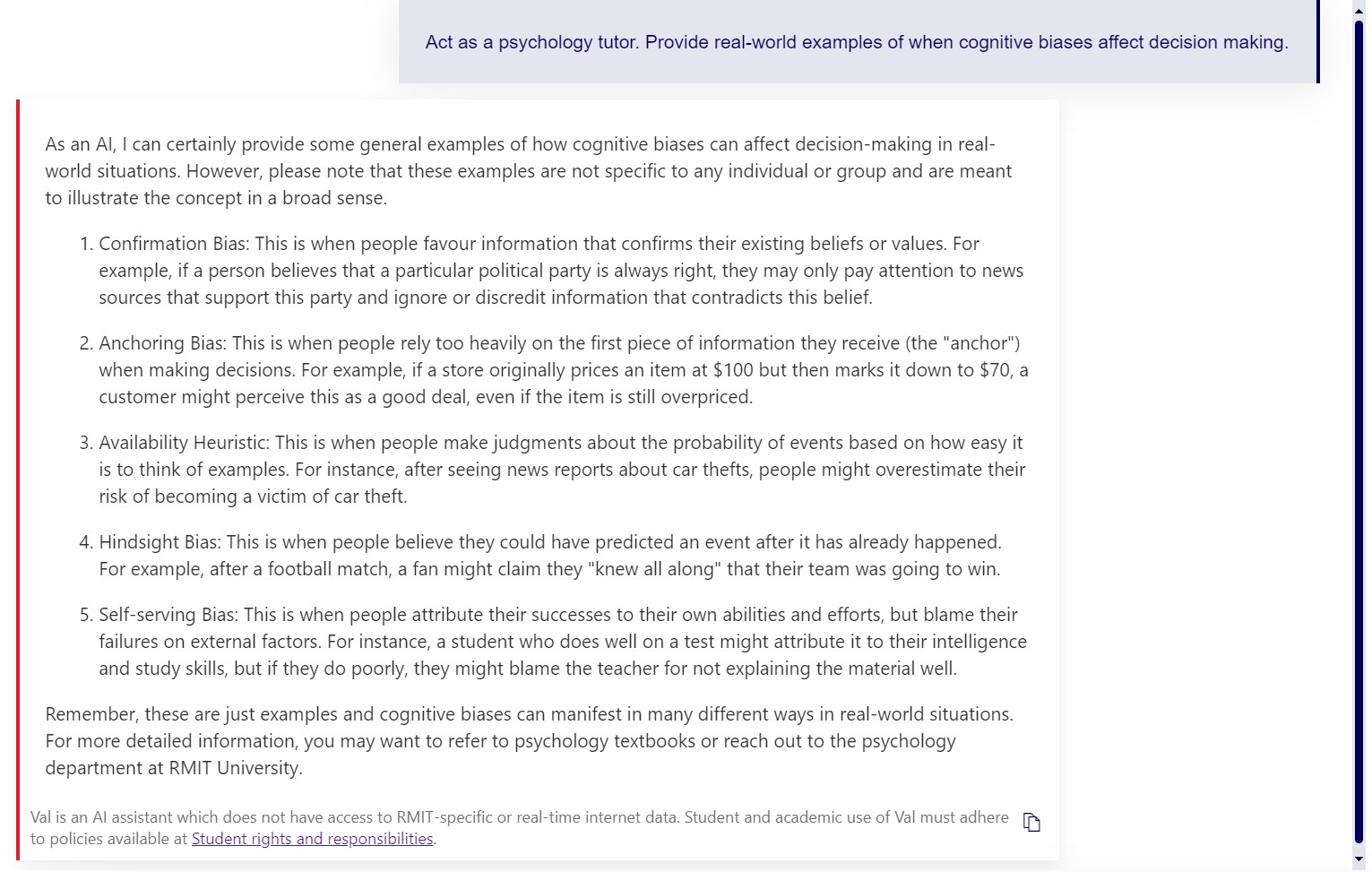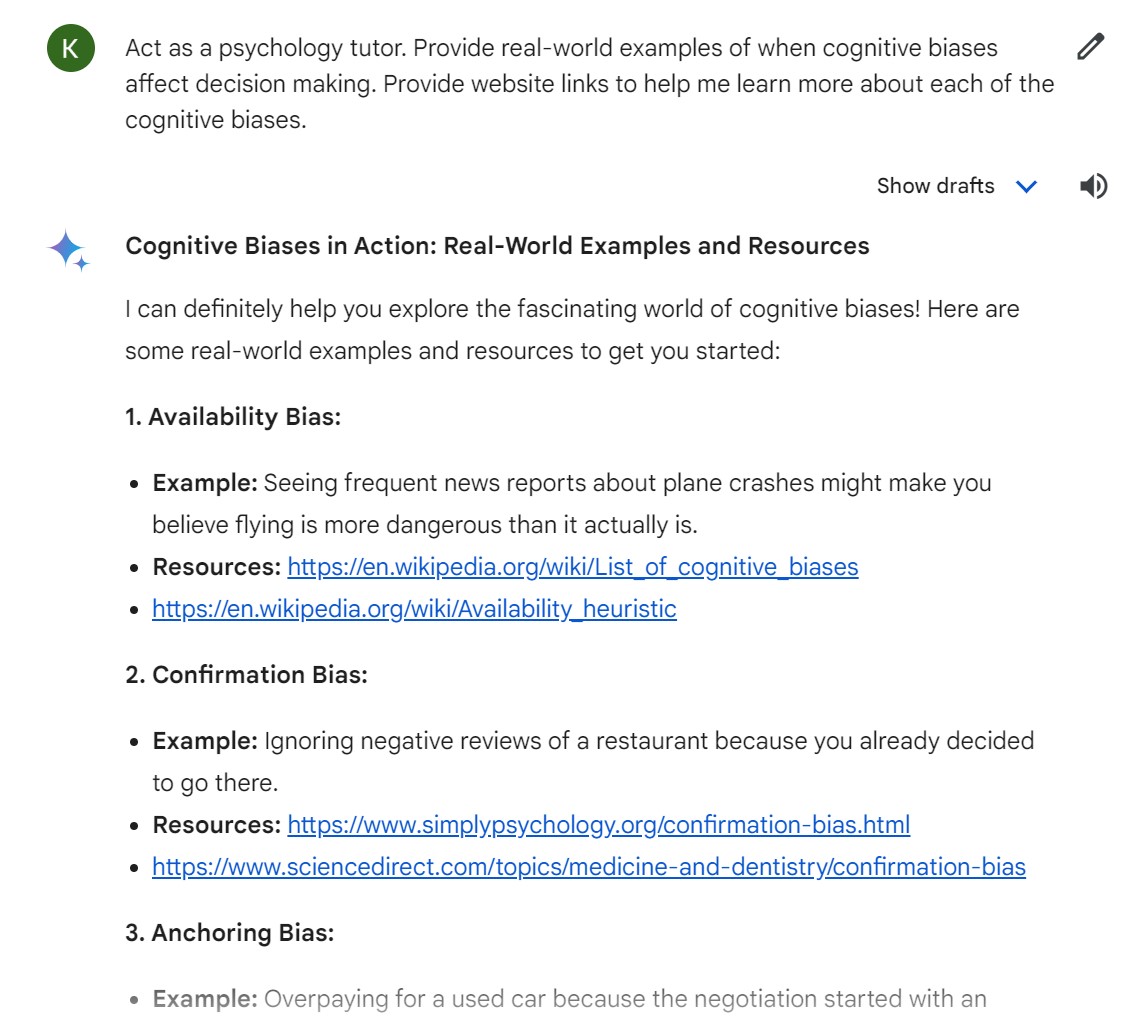13 Generating scenarios to help you understand concepts
Purpose and important information
Real-life scenarios, examples and situations can help to explain new concepts and can help you to apply your learning.
Important note: The scenarios and situations created by generative AI tools may be general and may not apply to your specific circumstances or study needs.
Prompt template
Note: The following prompt type is most suitable for language-based generative AI tools. In some generative AI tools, you will obtain higher-quality responses by using a series of prompts, rather than one longer prompt.
For this type of prompt, we recommend giving the AI tool a role which mimics a person who would have significant knowledge on this topic (e.g. a psychology tutor). In the prompt, specify the task (e.g. provide real-world examples of …) along with any specific requirements or parameters.
Act as <a role>. Provide a real-life scenario / real-world examples where <a concept would apply>.
Example prompt and output
The following example was tested in RMIT’s Val.

RMIT University. (2024). Val [Large language model]. https://val.rmit.edu.au. See Appendix 6 for prompt used and text generated.
Prompt template – including website links
Some generative AI tools will include website links to information sources when prompted to do so. Critically analyse any information sources retrieved from AI tools by applying evaluation techniques, for example the SIFT method or by lateral reading.
Act as <a role> in<field>. Provide real-life scenario/real-world examples where <a concept would apply>. Provide website links to <e.g. help me learn more>.
Example prompt and output
The following prompt was tested in Google Gemini.

Google. (2024). Gemini [Large language model]. https://gemini.google.com/share/a141266657db

